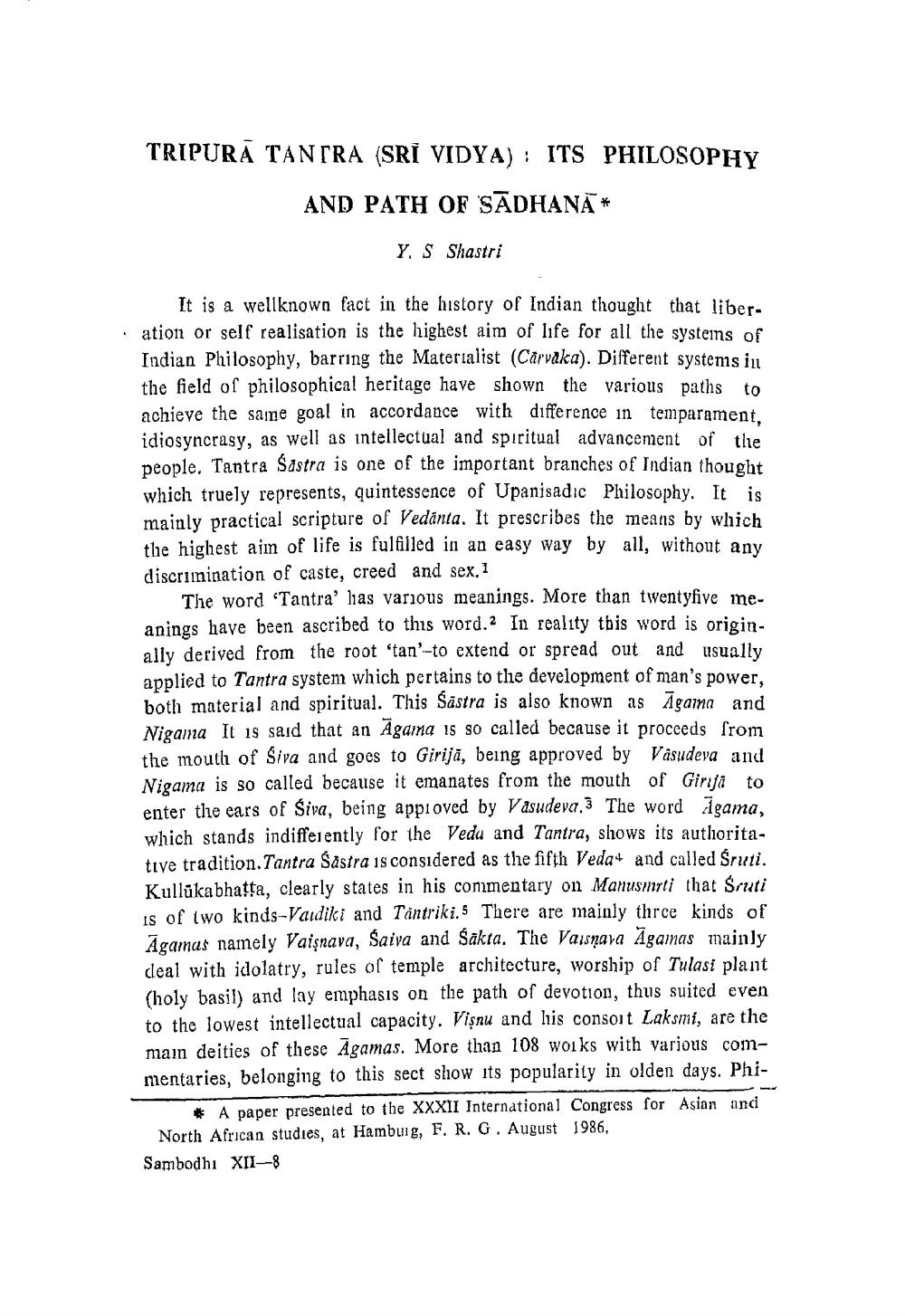________________
TRIPURĀ TANTRA (SRI VIDYA) : ITS PHILOSOPHY
AND PATH OF SĀDHANĀ *
Y. S Shastri
It is a wellknown fact in the history of Indian thought that liber·ation or self realisation is the highest aim of life for all the systeins of
Indian Philosophy, barring the Materialist (Carvaka). Different systems in the field of philosophical heritage have shown the various paths to achieve the same goal in accordance with difference in temparament. idiosyncrasy, as well as intellectual and spiritual advancement of the people. Tantra Sastra is one of the important branches of Indian thought which truely represents, quintessence of Upanisadıc Philosophy. It is mainly practical scripture of Vedanta. It prescribes the means by which the highest aim of life is fulfilled in an easy way by all, without any discrimination of caste, creed and sex. 1
The word "Tantra' las various meanings. More than twentyfive meanings have been ascribed to this word.2 In reality this word is origin. ally derived from the root 'tan’-to extend or spread out and usually applied to Tantra system which pertains to the development of man's power, both material and spiritual. This Šāstra is also known as Agama and Nigama It is said that an Agama is so called because it proceeds from the mouth of Siva and goes to Girijā, being approved by Vasudeva and Nigama is so called because it emanates from the mouth of Girija to enter the ears of Siva, being approved by Vasudeva, 3 The word igama, which stands indifferently for the Veda and Tantra, shows its authoritative tradition. Tantra Sastra is considered as the fifth Veda+ and called śruti. Kullūkabhatta, clearly states in his commentary on Manusmrti that Sruti is of two kinds-Vaidiki and Tantriki.5 There are mainly three kinds of Ägamas namely Vaişnava, Saiva and Sākta. The Vaisnava Āgamas mainly deal with idolatry, rules of temple architecture, worship of Tulasi plant (holy basil) and lay emphasis on the path of devotion, thus suited even to the lowest intellectual capacity. Vişnu and his consoit Laksmi, are the main deities of these Āgamas. More than 108 works with various commentaries, belonging to this sect slow its popularity in olden days. Phi
# A paper presented to the XXXII International Congress for Asian and North African studies, at Hamburg, F. R. G. August 1986, Sambodhı X1148




